岐阜城
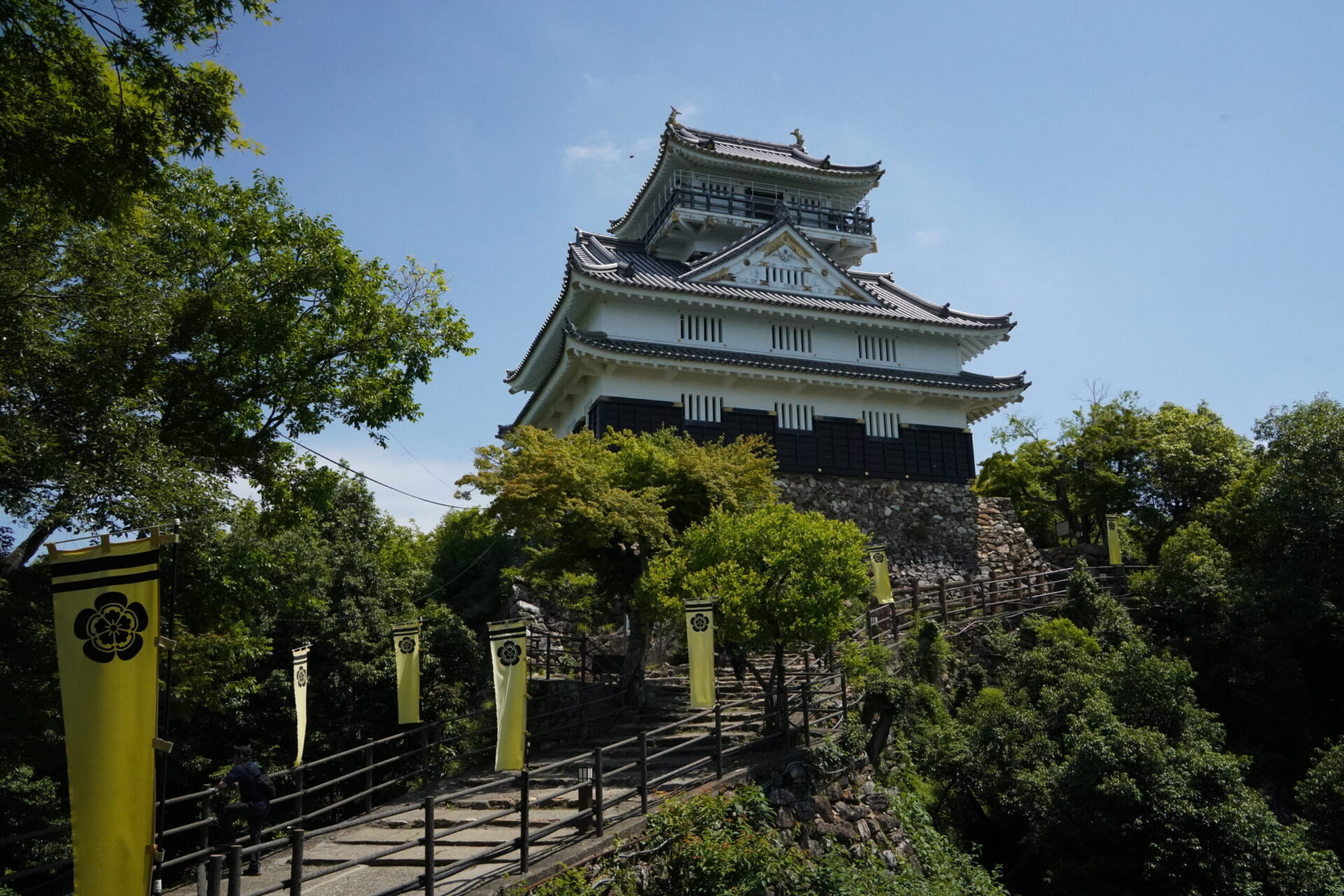
Gife castle
岐阜城
The name “Gifu” might be difficult to read for those from outside the prefecture due to its uncommon characters.
It is said that Oda Nobunaga was the one who named it. After moving to Inabayama Castle (now Gifu Castle), Nobunaga renamed the area previously known as “Inokuchi” to “Gifu.” This change was suggested by the Zen monk Sōon Takuan from Seishū-ji in Owari Province,who proposed three names: Gizan, Giyō, and Gifu. It is believed that Takuan considered the name Gifu from an ancient Chinese story that said, “King Wen of Zhou rose from Mount Qi and unified the land.” (From the “Azuchi Sōgyōroku”).Additionally, it is said that the name “Gifu” had already been used among Zen monks even before Nobunaga named it, and there are various theories about its origin.
信長が命名、由来は中国の故事とも
「岐阜(ぎふ)」という珍しい地名は、県外の方には読み方が難しいかもしれません。命名したのは織田信長といわれています。稲葉山城(現在の岐阜城)に居を移した信長が、城下の「井口(いのくち)」という地名を「岐阜」と改称。これには、尾張の政秀寺の禅僧である沢彦宗恩(たくげんそうおん)が進言した「岐山・岐陽・岐阜」の3つのうちから選んだといわれています。沢彦和尚は、天下統一を目指す信長のため、中国の「周の文王、岐山より起り、天下を定む」という故事から地名を考えたとされています。(「安土創業録」から)なお、信長が名づける以前から禅僧の間で「岐阜」という地名が使われていたともいわれ、その由来には諸説あります。
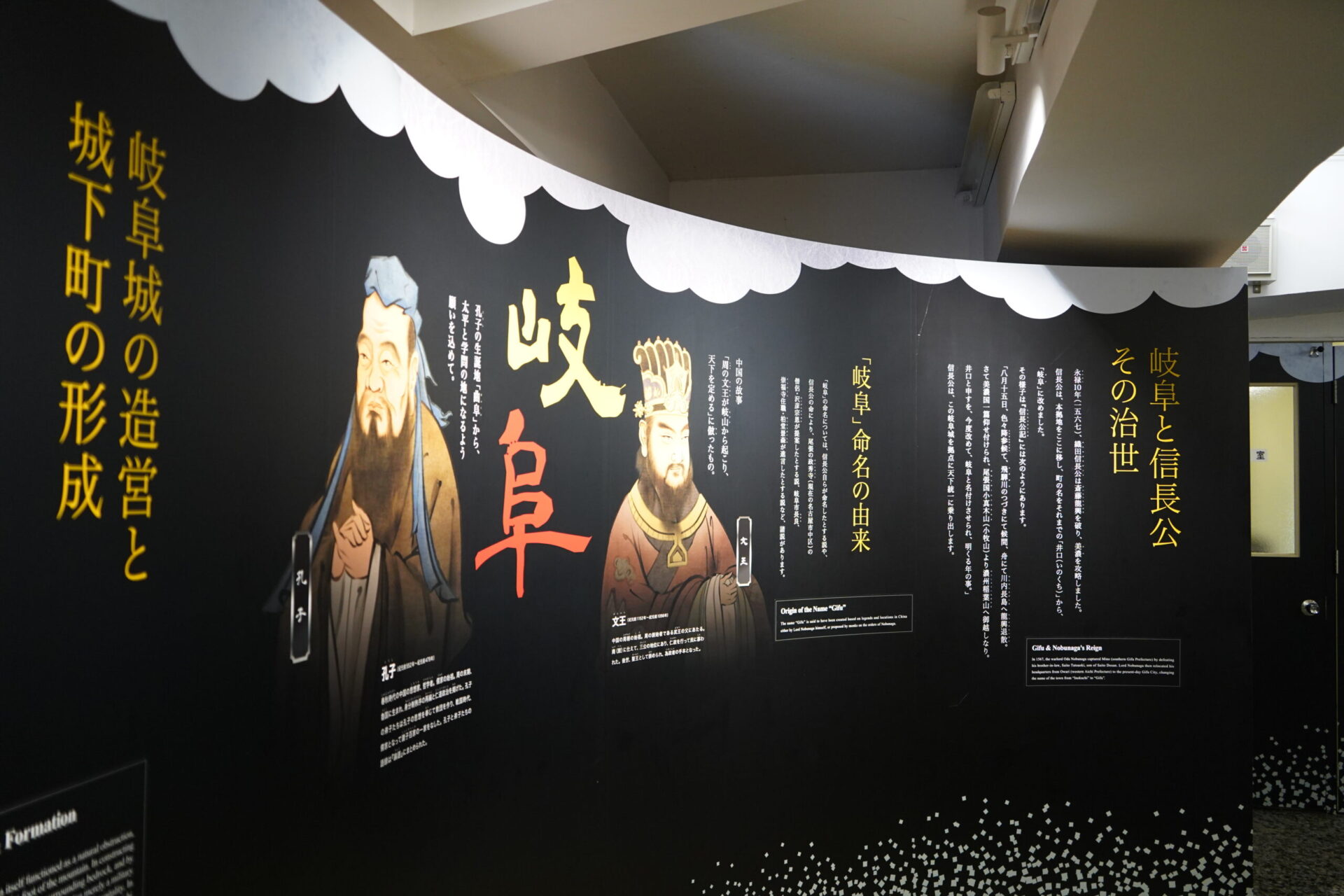
To commemorate the 120th anniversary of Gifu City’s establishment, a statue was erected in front of the north entrance plaza of JR Gifu Station through donations from the citizens. The pedestal stands approximately 8 meters tall, with the statue itself standing about 3 meters high, covered in three layers of gold leaf. Wearing a cloak, holding a Tanegashima (musket) in his right hand and a Western helmet in his left, and staring straight ahead, this statue symbolizes Lord Nobunaga, who always walked atthe forefront of his era and aimed for “transformation.” A replica of this statue is on display at Gifu Castle.
岐阜市制120周年を記念して、市民の寄付によりJR岐阜駅北口広場前に建立されました。台座までの高さは約8m、像の高さは約3mで金箔3層張り。マントを羽織り、右手に種子島(鉄砲)、左手に西洋兜を持ち、まっすぐ前を見つめる姿は、常に時代の最先端を歩き「変革」を目指した信長公の姿を象徴しています。岐阜城にはそのレプリカが展示されています。
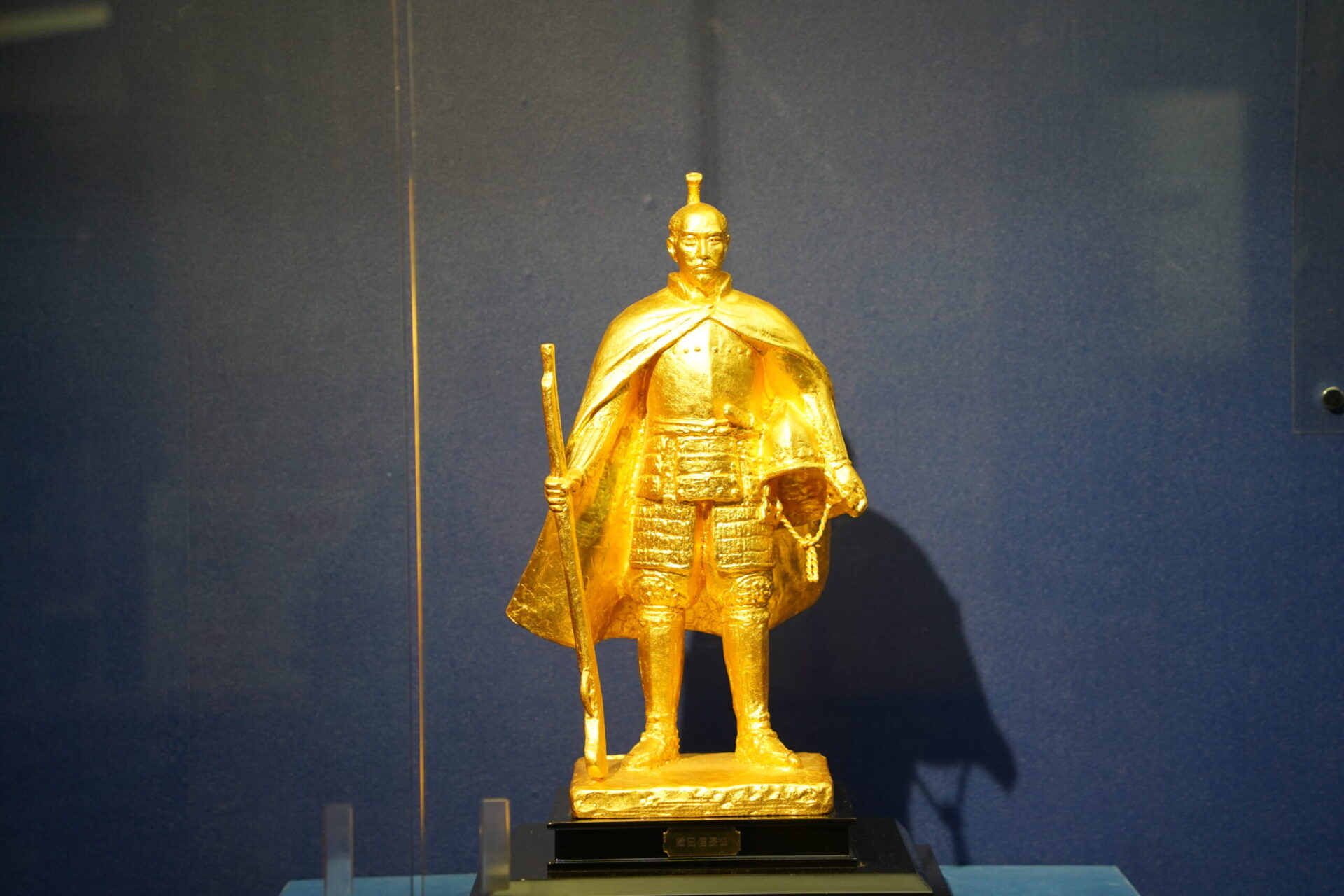
Nobunaga Oda demonstrated his unconventional political acumen after entering Gifu Castle.
The first measure he implemented was the “Rakuichi Rakuza” policy.
In an era when only certain merchants were allowed to dobusiness, he created a system where anyone could trade freely, revitalizing towns that had been devastated by war. The second measure was the “Separation of Warriors and Peasants” (兵農分離). By organizing a professional warrior class and separating soldiers from land ownership, he enhanced economic power, military strength, and productivity, thereby creating thriving castle towns.
織田信長の政治手腕
岐阜城に入城した信長は、型破りな発想で政治手腕を発揮しました。まず打ち出したのが「楽市楽座」。特定の商人しか商売が許されなかった時代に、誰もが自由に商売できるシステムを築き、戦乱で荒廃した町を復興させました。二つ目は、「兵農分離」。専業の武士団を組織して兵士と土地を切り離すことで、経済力、武力、生産力を向上させ、人が集まる城下町を作り上げました。
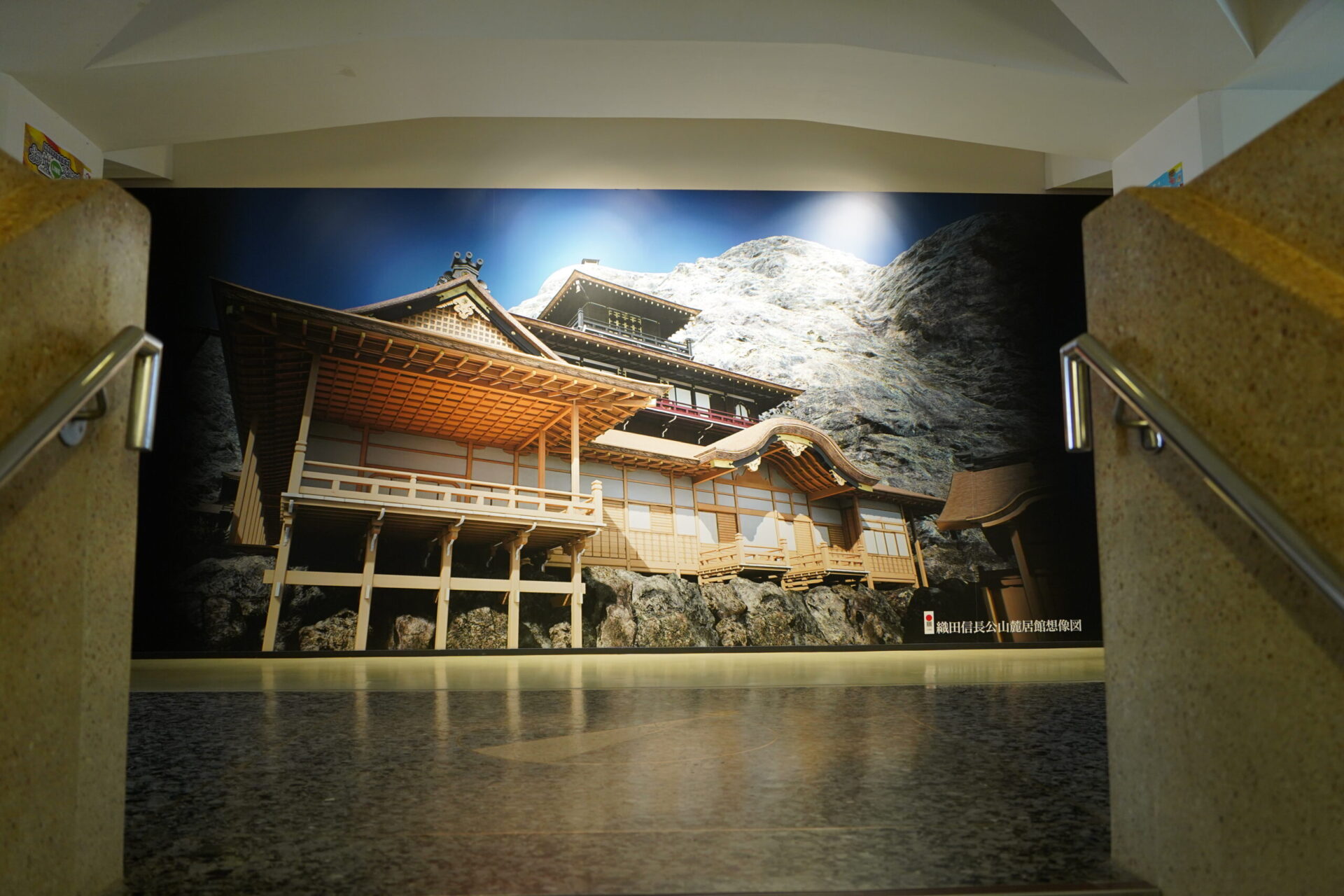
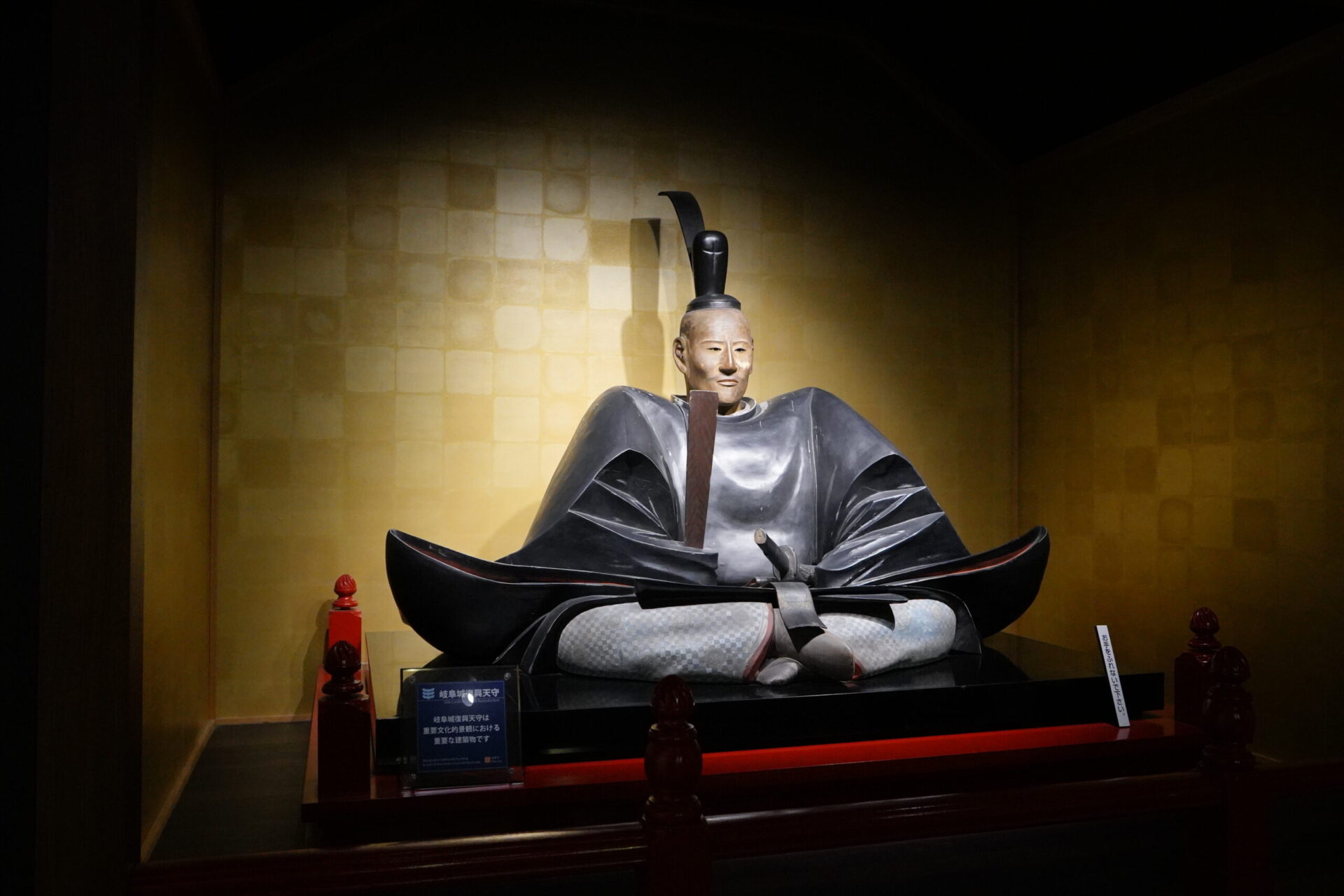
The residences of the successive lords of Gifu Castle are located at Keyakidani, below Senjojiki, on the western foothillsof Mount Kinka. These residences were originally constructed during the time of the Saitō clan, starting with Saitō Dōsan,and were later significantly developed and renovated by Oda Nobunaga. Excavations from Nobunaga’s era have revealed an entrance lined with large stones, buildings with gold-leaf tiles, and a garden set against a backdrop of enormous rock formations.
岐阜城の歴代城主の館は、金華山の西麓にある千畳敷下・槻谷(けやきだに)にあります。斎藤道三に始まる斎藤氏三代の頃に造られ、織田信長が大規模に造成・改修をしました。
信長時代の館は発掘調査から、巨石を立て並べた入口や金箔瓦を使用した建物、巨大な岩盤を背景にした庭園などがあったことが分かりました。
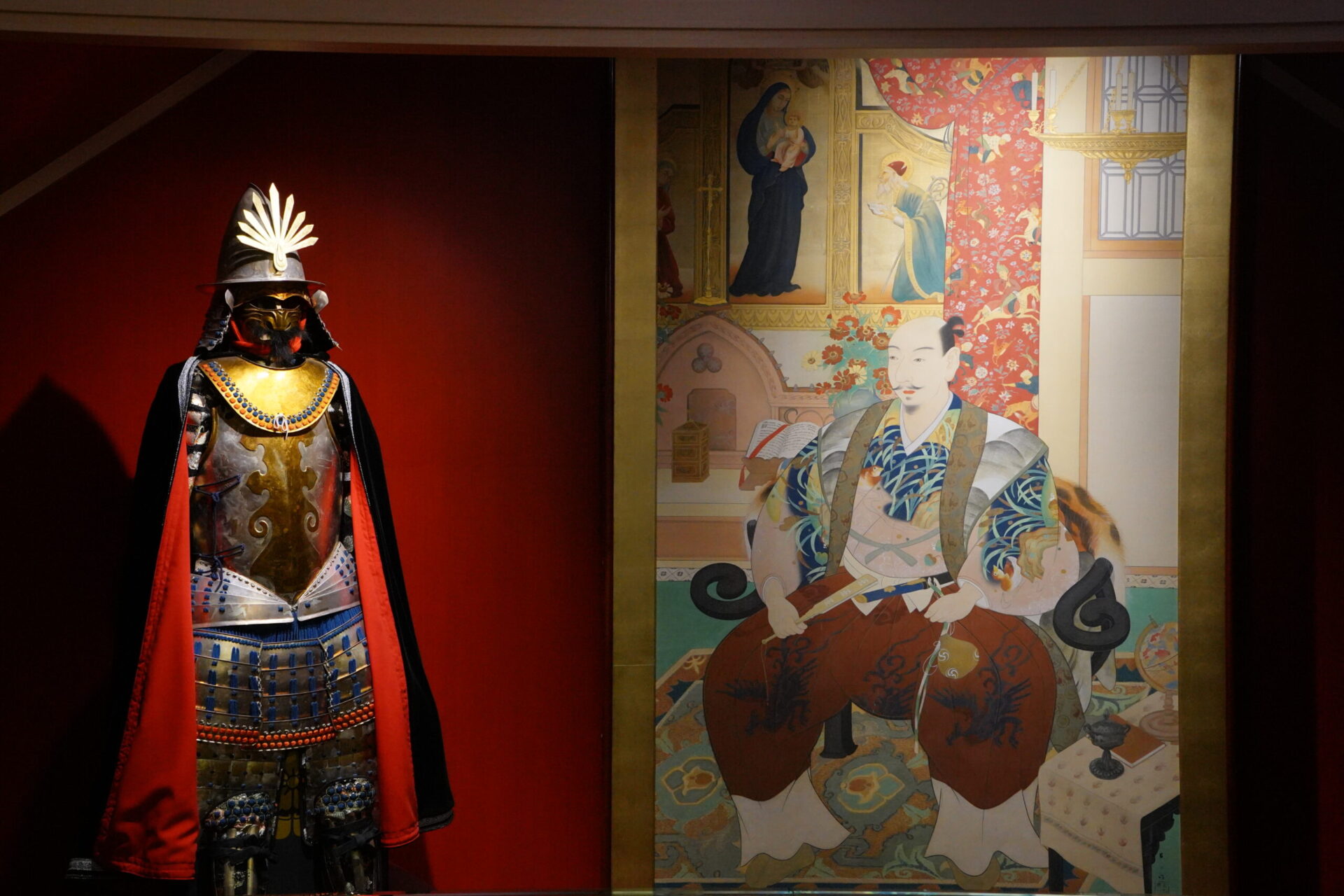
The Statue of Oda Nobunaga at Kyoto Nanban Chapel
京都何番礼拝堂の織田信長像
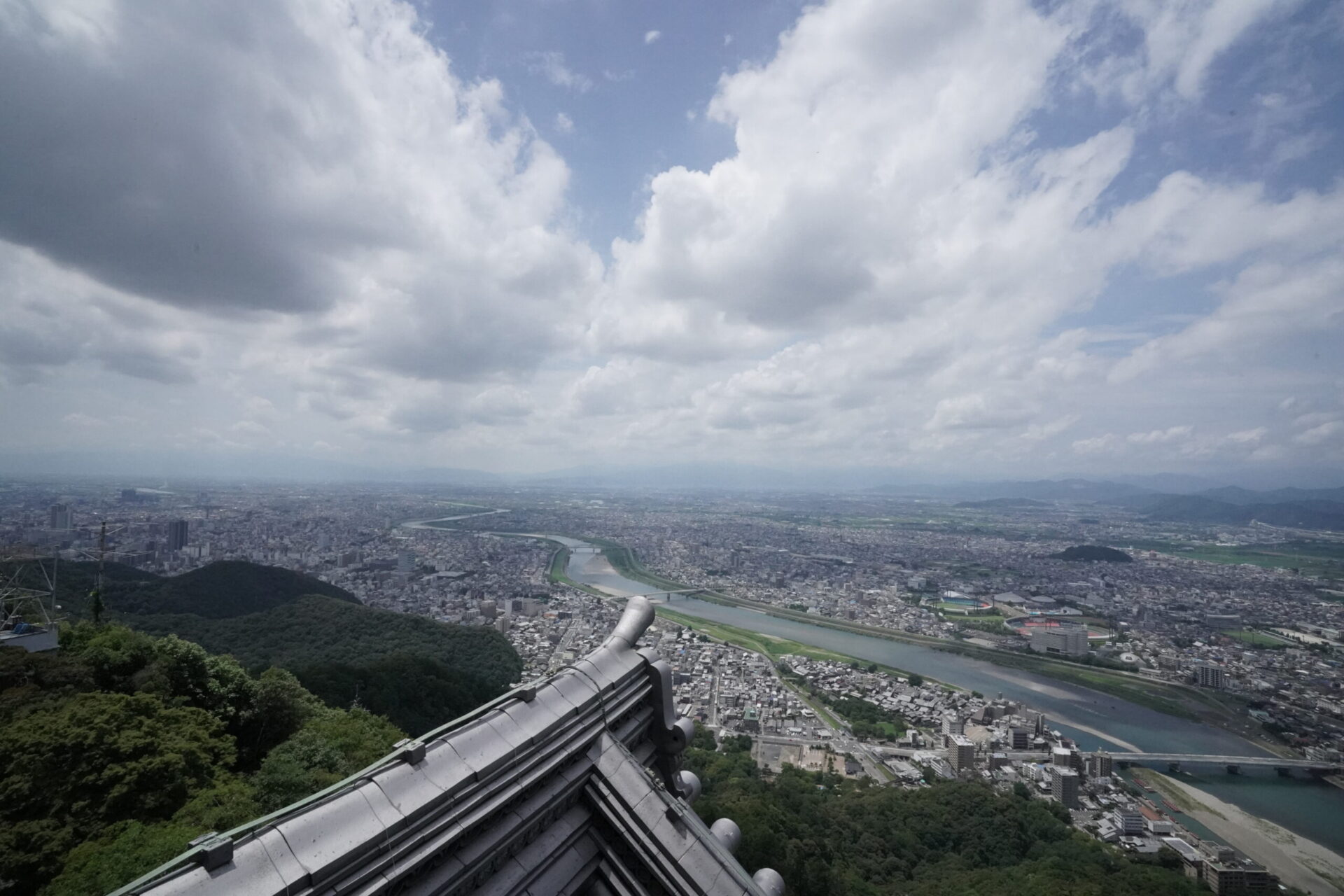
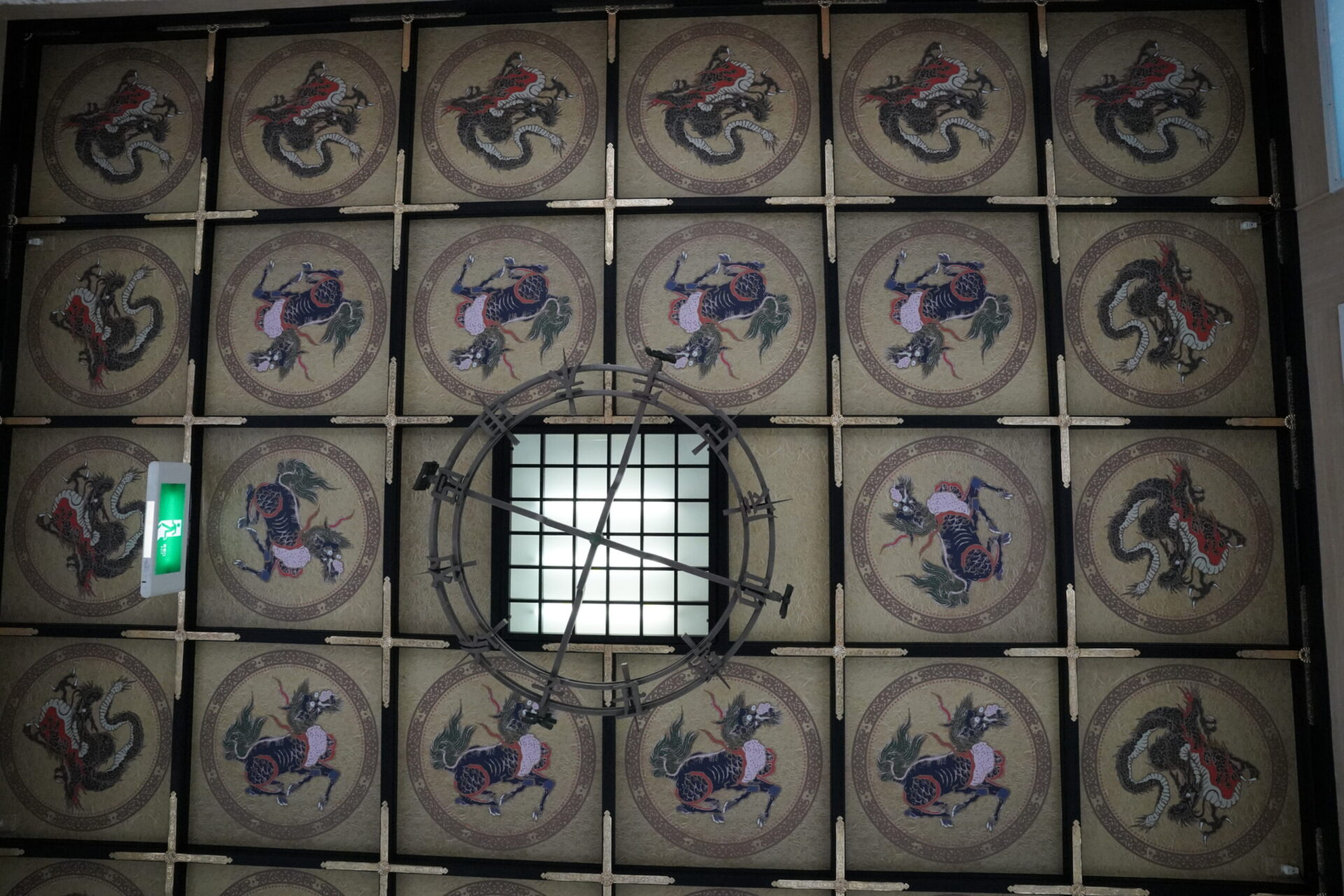
The interior of the keep serves as a museum up to the third floor, exhibiting historical materials, models, and panels focusingon the era of Nobunaga. The highlight is the 360-degree panoramic view from the surrounding balcony on the top floor. From there, you can see the city of Gifu, the Nagara River, and even the skyscrapers of Nagoya. You can also view Owari, which was Nobunaga’s base of operations, Komaki Mountain, which was the strategic point for the Gifu campaign, and Sekigahara. This truly allows you to relive the grand vista that Nobunaga might have envisioned during his quest for national unification.
天守内部は3階まで資料館となっており、信長時代を中心とする史料や模型、パネルなどを展示しています。
一番の目玉は、最上階の廻縁(まわりえん)から眺める360度パノラマ。岐阜の市街や長良川はもちろん、名古屋の高層ビルまで望めます。信長の本拠地だった尾張方面や岐阜攻略の拠点とした小牧山、関ケ原なども見渡せて、まさに天下統一を胸に見下ろした雄大な景色を追体験できる場所です。
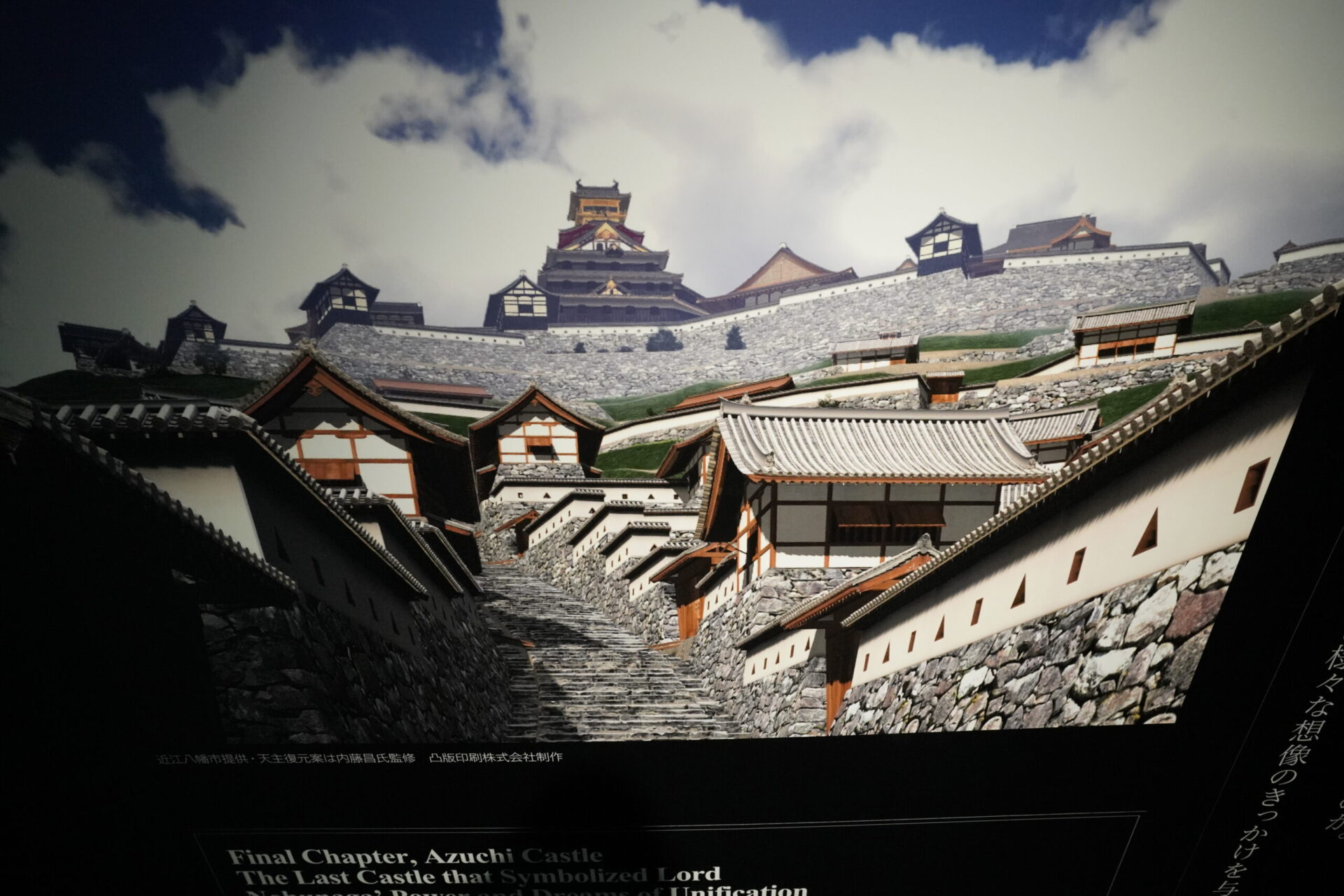
Azuchi Castle is renowned for being constructed by Oda Nobunaga. As the tallest wooden structure of its time in Japan,
Azuchi Castle’s keep, known for its magnificence, symbolized Nobunaga’s power and wealth, intimidating other daimyos. While modern castles typically use the term “tenshu” to refer to the main keep, Azuchi Castle uses “tenshu.” This is because Nobunaga’s retainer, Ota Gyuichi, used the term “tenshu” in the “Shinchokoki” (Chronicle of Lord Nobunaga).
安土城は、織田信長により築城された城として有名です。当時の木造高層建築で日本一の天主を誇っていた安土城は、権力や財力を誇示し、諸大名たちに脅威を与える威厳がありました。近代城郭では「天守」と表記されることが多いのですが、安土城の場合は「天主」と表記します。これは、織田信長の家臣である太田牛一(おおだぎゅういち)が「信長公記」(しんちょうこうき)で「天主」と表記していたのが理由です。
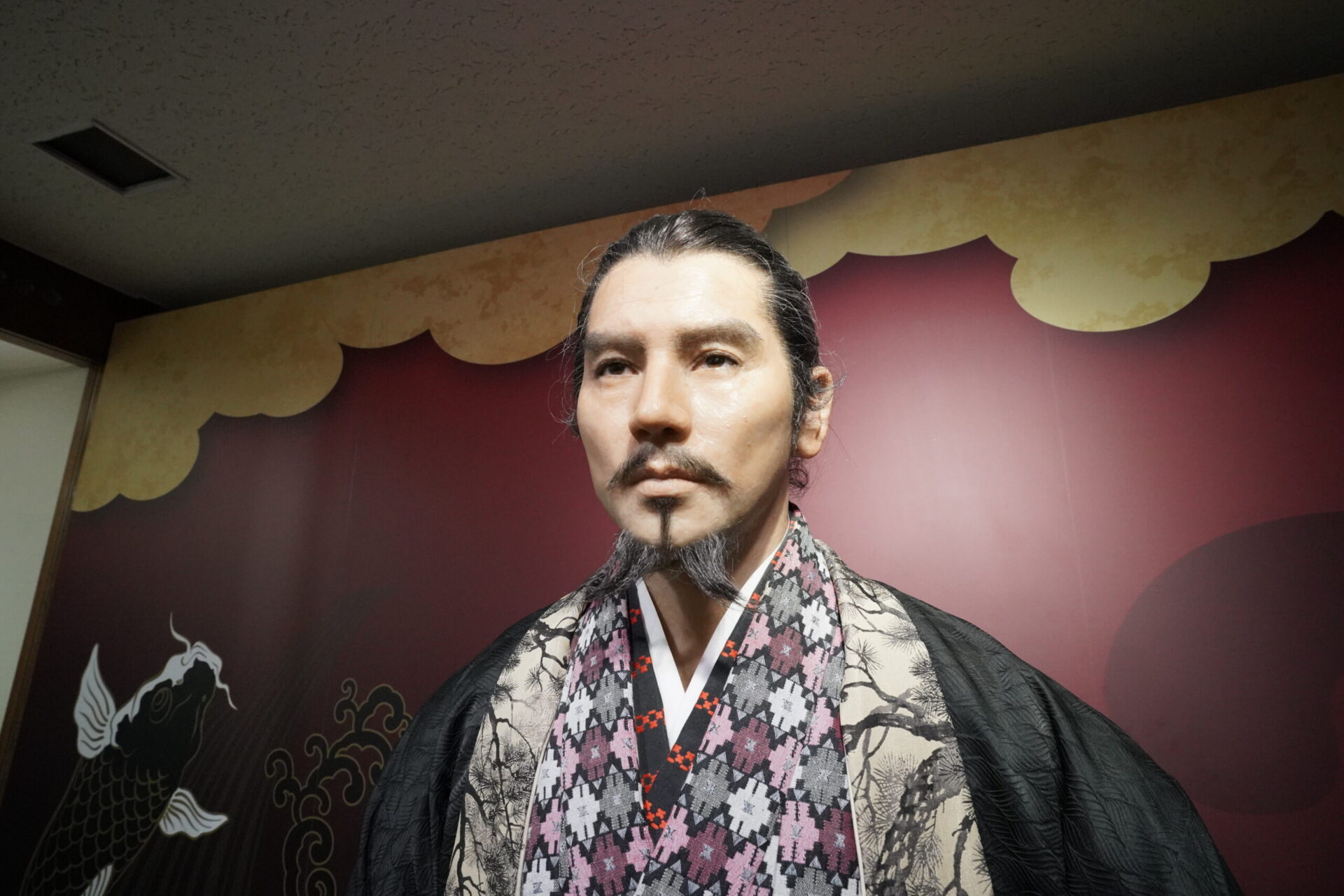
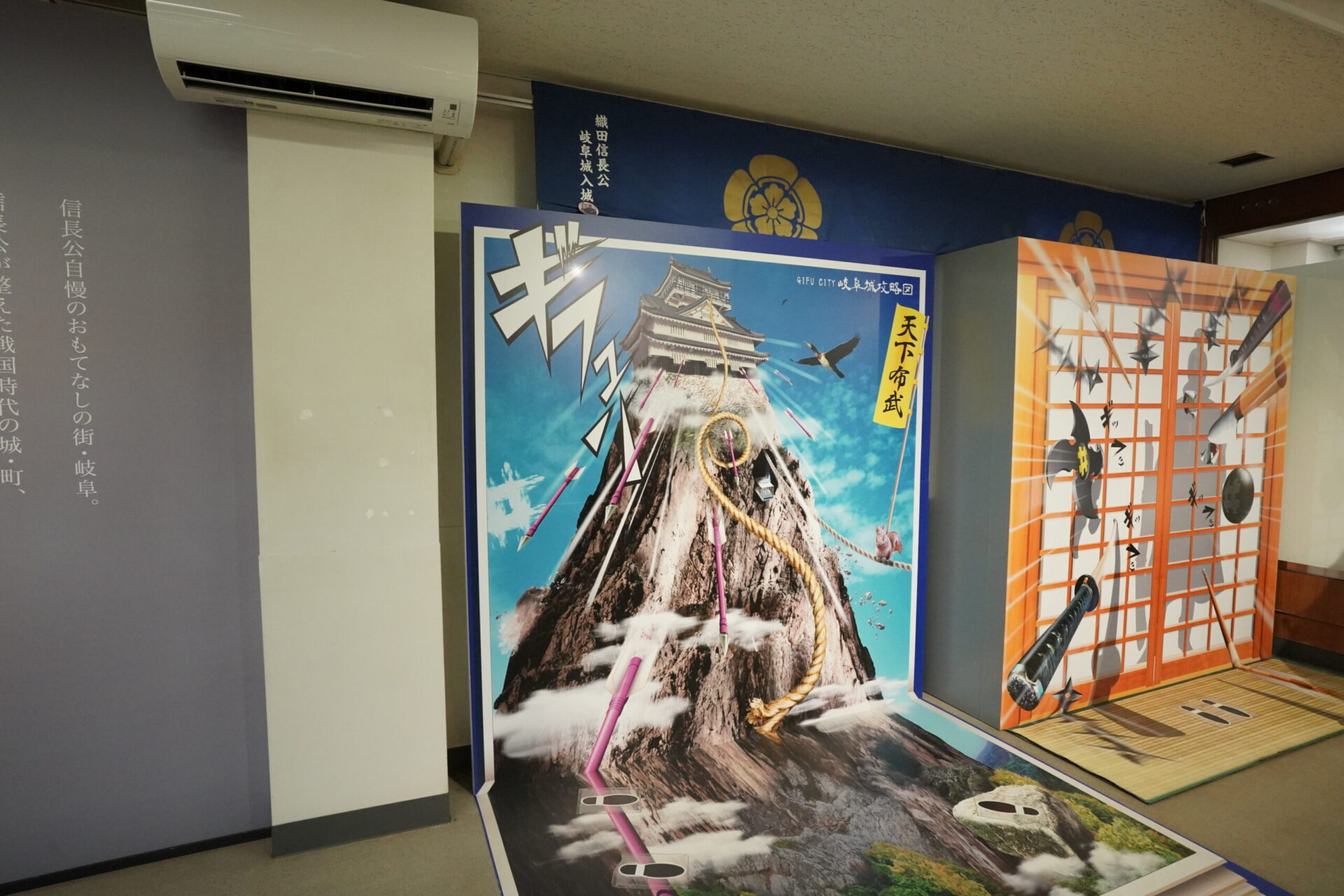
Just east of Gifu Castle is the Gifu Castle Archive Museum. This museum, restored in April 1975, was
originally an old armory and food storage facility built in the style of a corner turret. Inside, it displays
various materials related to Gifu Castle.
岐阜城のすぐ東に岐阜城資料館があります。昔の武器庫、食糧庫を隅櫓城郭造りに昭和50年4月に復元したもので、内部には岐阜城
関係の資料等を陳列しています。
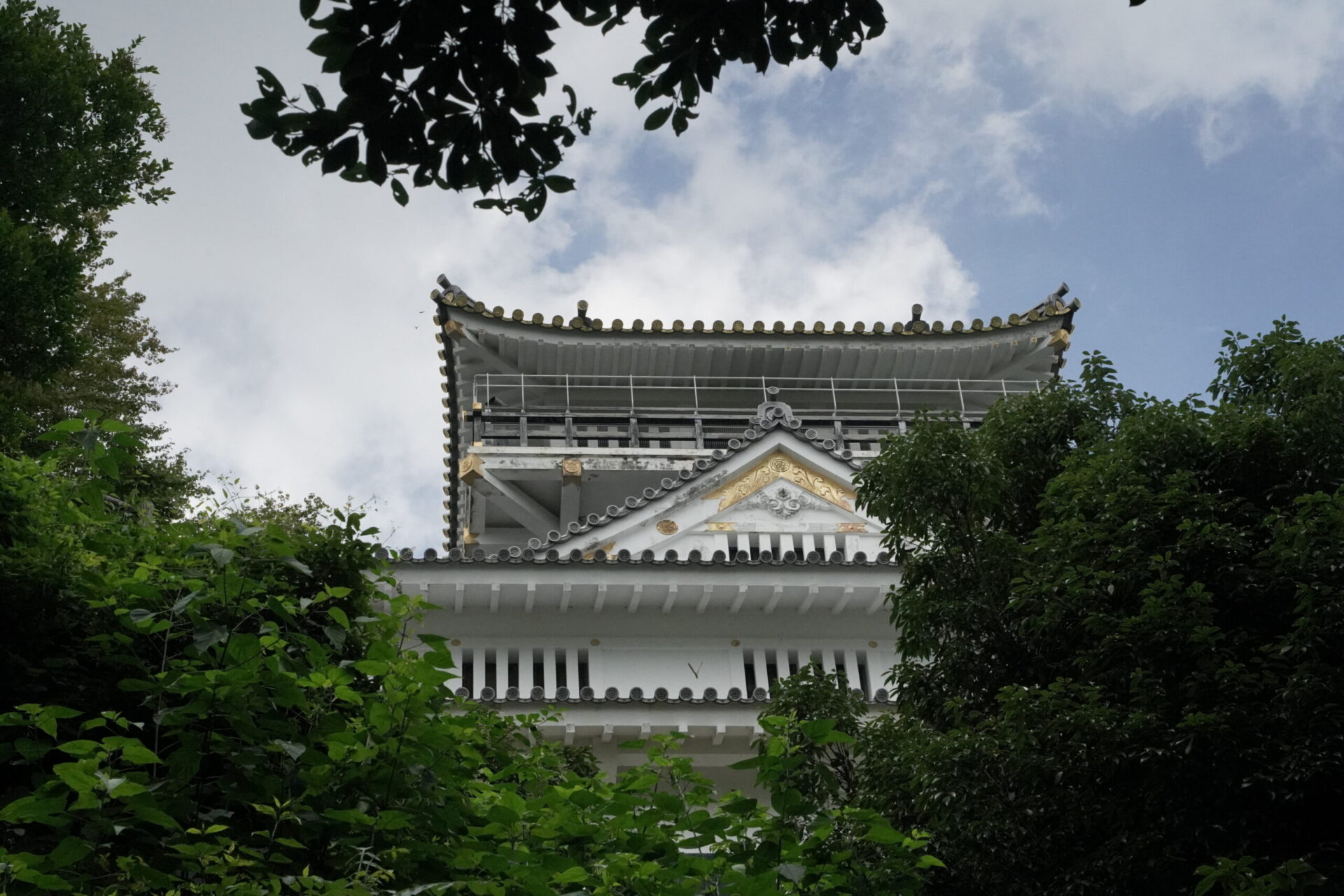
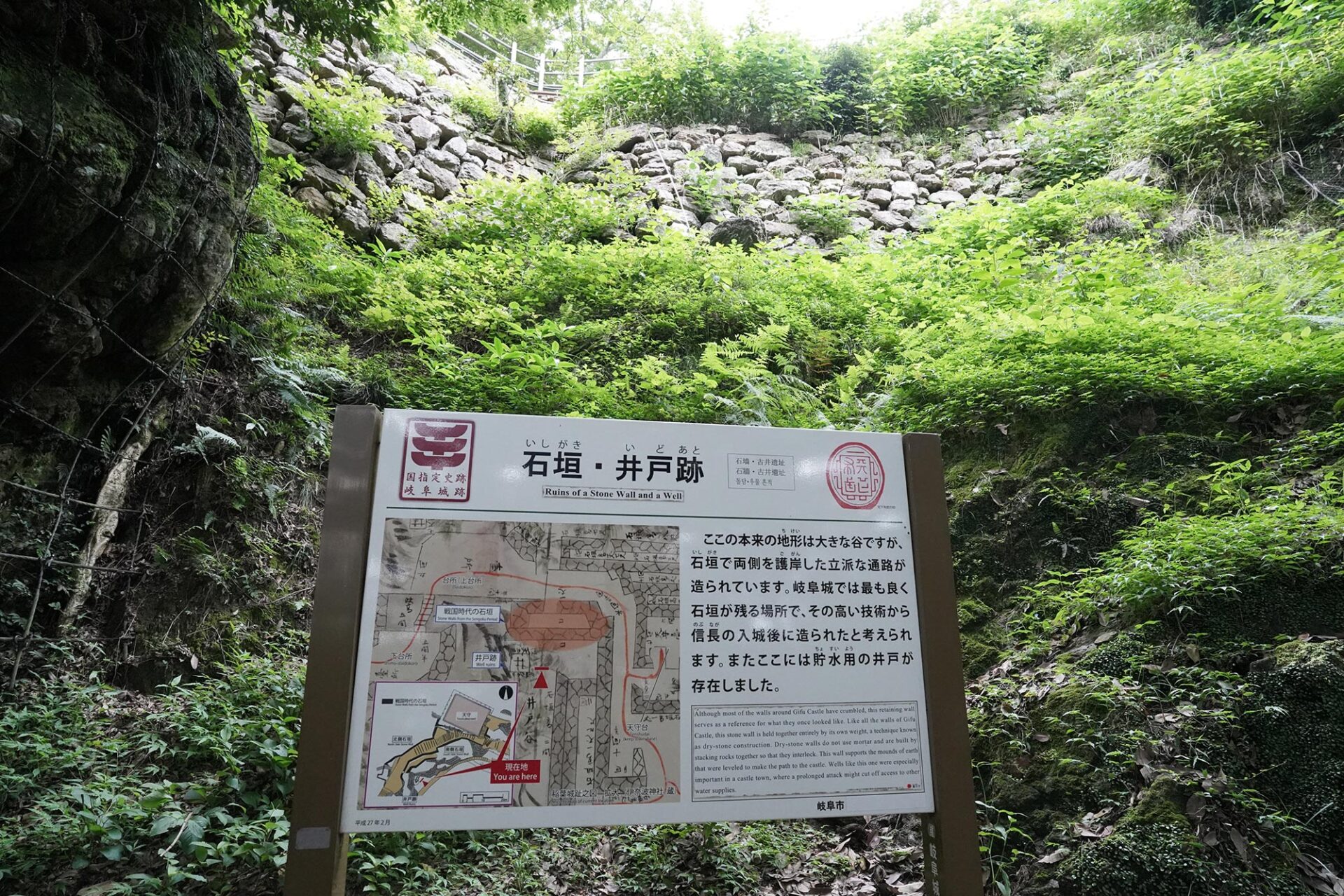
The keep was reconstructed based on ancient documents, and the surrounding area is dotted with stone walls from the
Sengoku period, making it a must-see for history enthusiasts. Below the cliff on the south side of the keep, there is a
spot where you can look up at the keep over the stone walls built by Nobunaga.
天守は古文書などを参考にして再建されたものだが、周辺には戦国時代の石垣が点在し、歴史好きなら見逃せない。天守南側の崖の下は、信長が築いた石垣越しに天守を仰ぎ見ることができるスポットがあります。
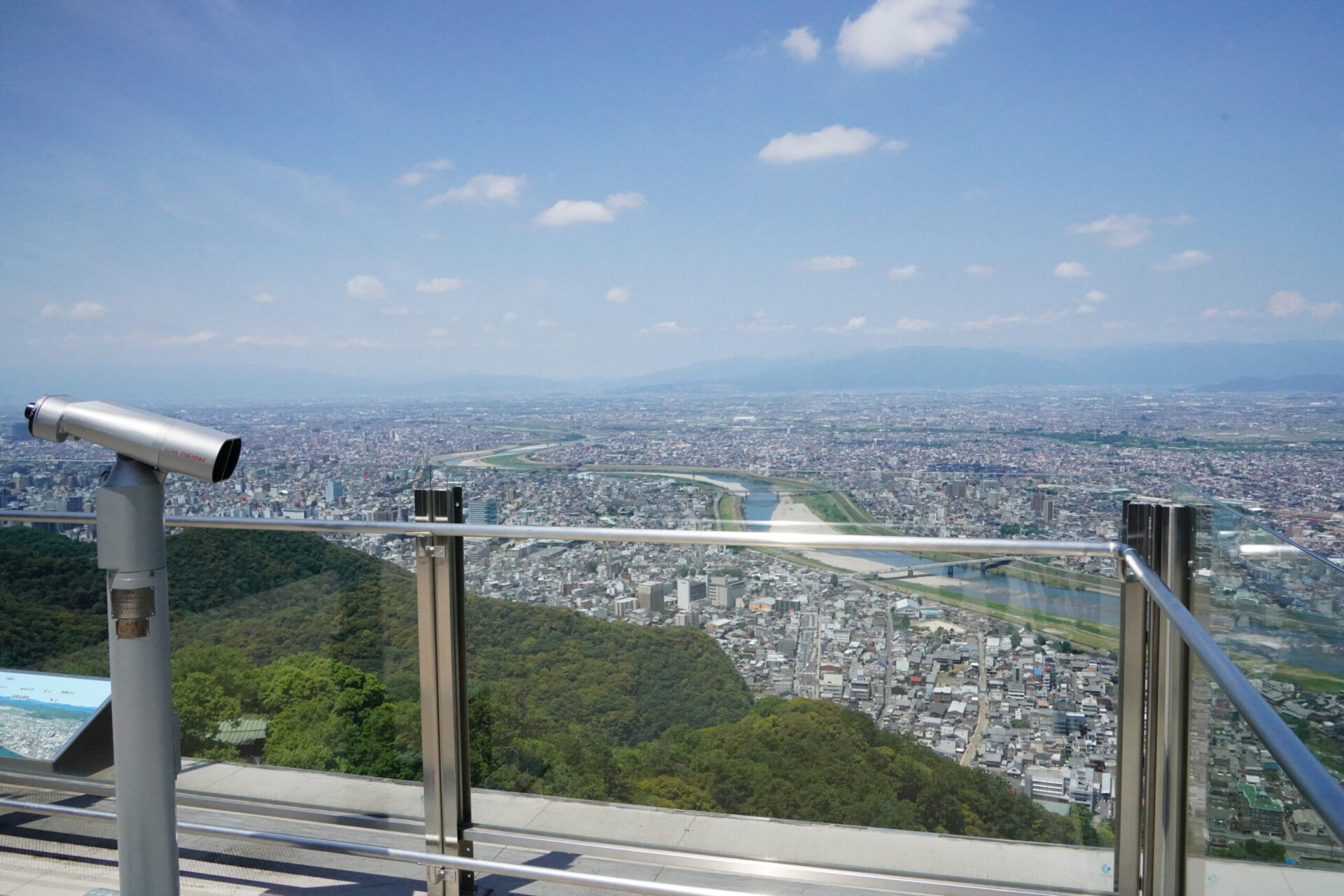
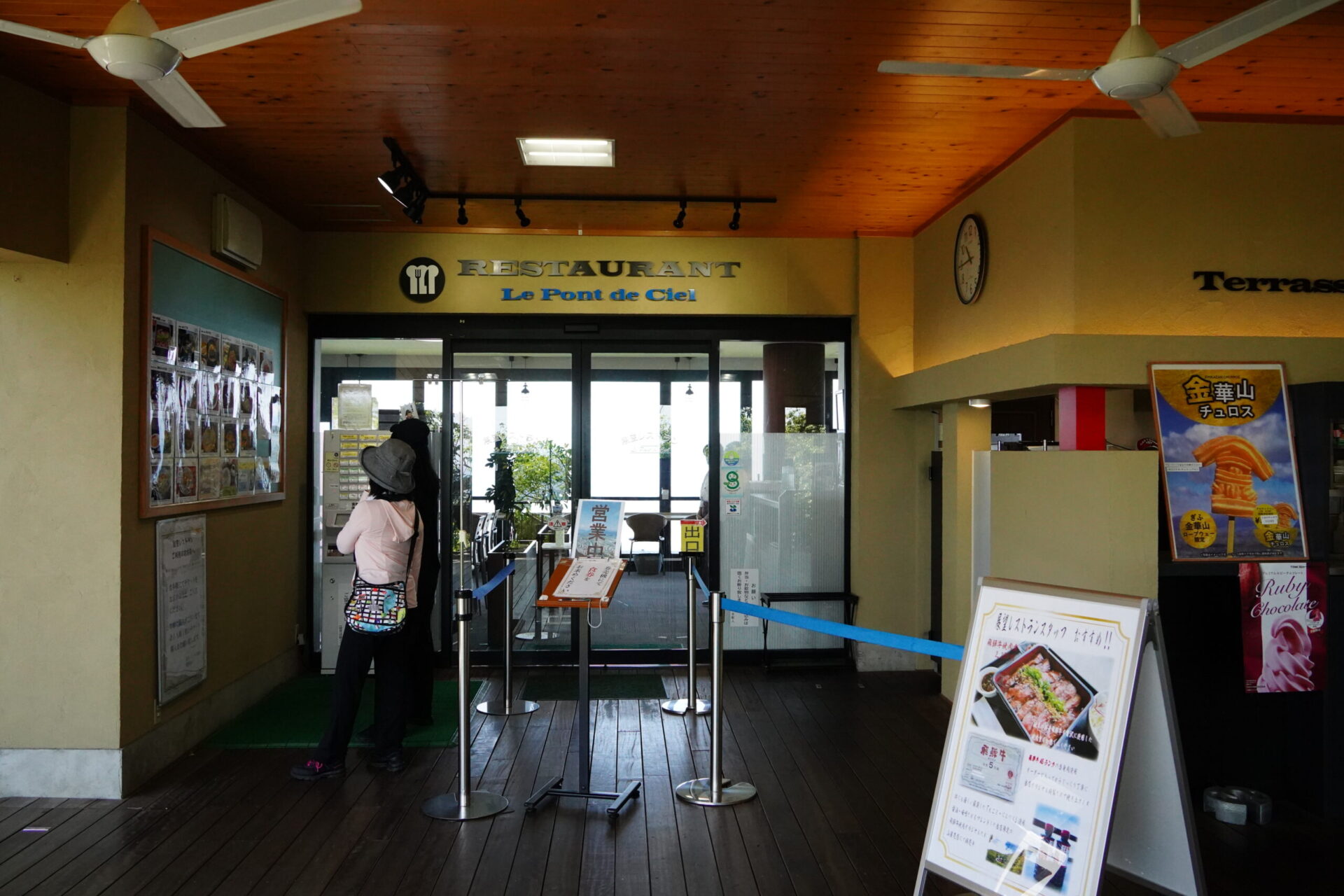
At the summit of Mount Kinka, there are various facilities, including an observation deck where you can enjoy
the rich scenery of Gifu, an observation restaurant for dining, a cafe, and Squirrel Village.
金華山山頂には岐阜の豊かな景色を眺められる展望台やお食事ができる展望レストラン、カフェ・リス村など様々な施設があります。
Gifu Castle
〒500-0000 Tenshukaku 18 , Gifu City,Gifu Prefecture
Open Year-Round
【Opening Hours】
March 16th – October 16th: 9:30 AM – 5:30 PM
October 17th – March 15th: 9:30 AM – 4:30 PM
(It takes about 8 minutes on foot from the Ropeway Summit Station to Gifu Castle Main Keep.
Those wishing to enter should arrive at the entrance of Gifu Castle Main Keep at least 15 minutes before closing time.)
*On New Year’s Day, the opening hours are from 6:30 AM to 4:30 PM.
Admission Fee (common for Gifu Castle Museum)
Category | Adults (16 years and older) | Children (4 to 16 years old)
Individual | 200 yen | 100 yen
Groups (30 or more) | 160 yen | 80 yen
岐阜城
〒500-0000 岐阜県岐阜市天主閣18番地
年中無休
【開館時間】
3月16日~10月16日 午前9時30分~午後5時30分
10月17日~3月15日 午前9時30分~午後4時30分
(ロープウェー山頂駅から岐阜城天守閣までは、歩いて8分ほどお時間がかかります。
入場を希望される方は、開館時間終了の15分前までに岐阜城天守閣入口までお越しください。)
※元旦のみ午前6時30分~午後4時30分
入場料(岐阜城資料館と共通)
区分 大人 (16歳以上) 小人(4歳以上16歳未満)
個人 200円 100円
団体30人以上 160円 80円